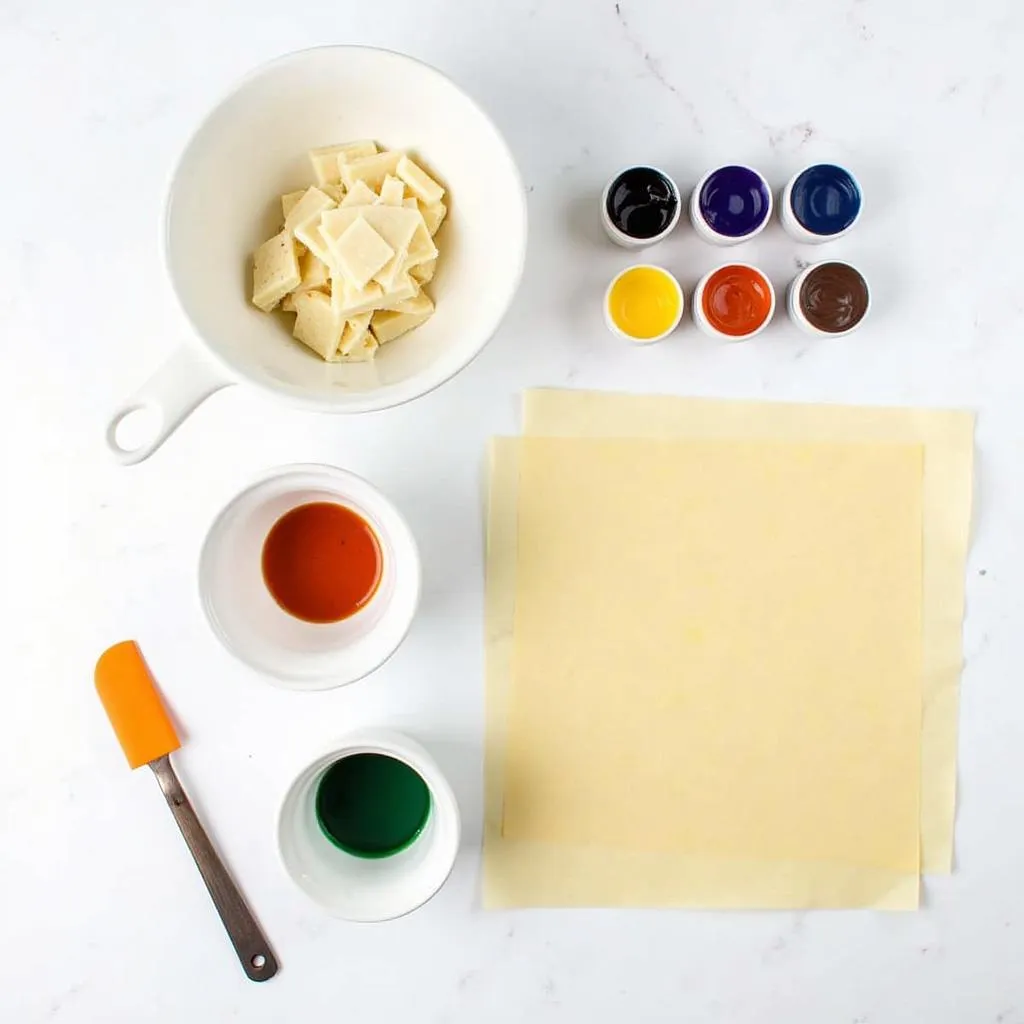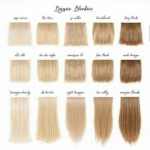Almond bark, a confectionery dream, offers a blank canvas for culinary creativity. But how do you transform this simple treat into a vibrant masterpiece? Whether you’re looking to match a specific color theme for a party or just want to add a splash of personality to your desserts, coloring almond bark is easier than you might think.
 Supplies for coloring almond bark
Supplies for coloring almond bark
Choosing Your Coloring Agent
Before you begin, you need the right tools to achieve the desired hues. Here are the two most popular options:
- Candy Melts: These pre-colored melting wafers are a convenient choice for solid, vibrant colors. They melt smoothly and set beautifully, making them perfect for dipping or drizzling.
- Oil-Based Food Coloring: This versatile option offers endless possibilities. You can use it to create custom shades, pastels, or even achieve a watercolor effect. Remember, water-based food coloring won’t mix properly with melted chocolate and can cause it to seize.
Melting and Coloring Almond Bark
The key to successful coloring is a gentle touch and even heat distribution:
- Melt the Bark: Begin by melting your almond bark. You can do this in a double boiler or the microwave, ensuring you stir frequently to prevent burning.
- Add Your Color: If using candy melts, simply add them to the melted almond bark and stir until fully combined. For oil-based coloring, start with a few drops and gradually add more until you reach the desired shade.
- Test the Color: Once the color is incorporated, test it on a small piece of parchment paper. The color will appear lighter once set, so keep this in mind when mixing.
 Mixing almond bark with food coloring
Mixing almond bark with food coloring
Tips and Tricks for Stunning Results
- Creating Marbling: For a visually appealing marbling effect, don’t fully mix the colors. Swirl them gently together, leaving streaks of each color visible.
- Adding Texture: Before the almond bark sets, sprinkle it with chopped nuts, sprinkles, or edible glitter for added texture and visual interest.
- Working with White Almond Bark: White almond bark offers the most versatile base for coloring, allowing colors to appear more vibrant.
Troubleshooting: Common Issues and Solutions
- Almond Bark Too Thick: If your almond bark seems too thick after adding color, you can thin it out with a small amount of vegetable shortening or paramount crystals.
- Air Bubbles: To prevent air bubbles, make sure your spatula and bowl are completely dry before melting the almond bark.
- Color Not Vibrant Enough: Remember that the color will lighten slightly as the almond bark sets. If you want a more intense hue, add a touch more coloring.
 Beautifully decorated almond bark treats
Beautifully decorated almond bark treats
From Simple to Spectacular: Unleash Your Creativity
Coloring almond bark opens up a world of creative possibilities. Use it to create eye-catching treats for holidays, special occasions, or simply to bring a burst of color to your everyday desserts. Remember, the only limit is your imagination!
FAQ
1. Can I use water-based food coloring to color almond bark?
No, water-based food coloring will not mix properly with melted chocolate and can cause it to seize. It’s essential to use oil-based food coloring for the best results.
2. How do I store colored almond bark?
Store colored almond bark in an airtight container at room temperature for up to two weeks.
3. My almond bark cracked when I broke it. What went wrong?
Almond bark can crack if it’s not tempered properly or if the temperature changes too drastically during the setting process. Make sure to follow the melting and cooling instructions carefully.

